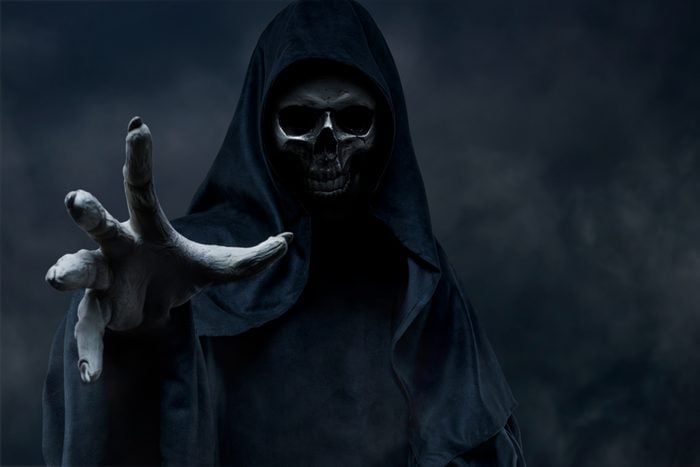
Halloween’s creepy creatures
The perfect Halloween night should involve a full moon, a cloudy sky, a cool breeze and stories about creatures we hope we never have to encounter. But who came up with these Halloween monsters, ghouls and witches? Just as you might think you know the answer to “What is Halloween?” the real story behind this hair-raising holiday and its accompanying blood-curdling beasts isn’t so simple.
Halloween monsters reflect human explanations for the unknown and provide an outlet for our deepest, most primal fears. There’s a reason they’re often the stars of the best Halloween movies (yes, even the Halloween movies for kids). If you love to hear ghost stories and scary Halloween stories, we dare you to learn the true-life tales that inspired these beasties. Read on to discover the hidden origins of Halloween monsters as we “dig up” the secrets of supernatural beings, from ancient myths to modern incarnations. Talk about cool Halloween trivia for the holiday!
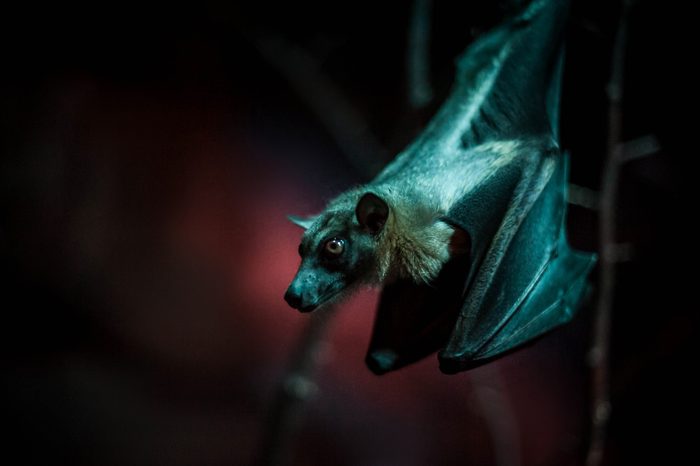
Vampires
Long before Edward Cullen and the Twilight vampires, Slavic folklore came up with the idea of the dead drinking the blood of the living in order to explain contagious diseases. If someone in a village died and then someone else became sick, it was blamed on the deceased coming back to do harm. Grisly rituals were then performed on the body to stop the dead from preying on the living, desecrations that were later also done in western Europe and even in America to quell supposed vampirism.
But Irish author Bram Stoker and his popular 1897 vampire novel Dracula, inspired by this folklore and allegedly the brutal medieval ruler Vlad the Impaler, brought vampire legends into the mainstream. Today, countless movies and TV adaptations, including the Netflix series Dracula, keep these blood-sucking Halloween monsters in our modern midst.
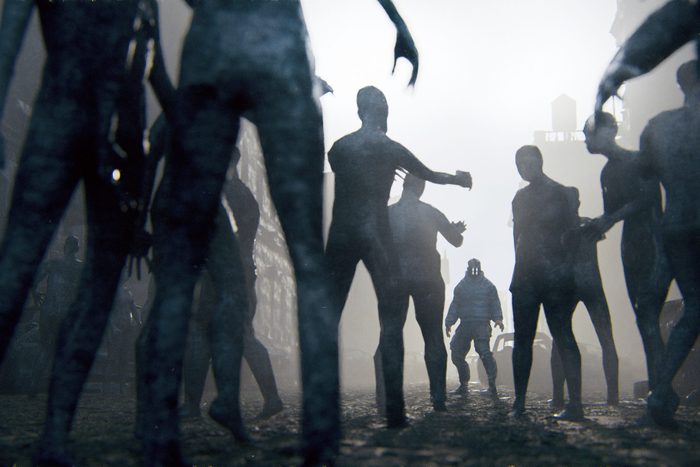
Zombies
Although modern zombies are not very smart, which makes them easy to kill, their sheer numbers can overpower and then consume the living. The origin of this Halloween monster, while less gory, is just as horrific: Slaves in Haiti, drawing on African religion, developed the idea as a metaphor for the brutal conditions they lived under. This story was incorporated into the voodoo religion of the Caribbean, South America and the southern United States—and even had some basis in fact. Voodoo practitioners called bokors were said to employ a deadly neurotoxin called tetrodotoxin that can actually inflict a temporary deathlike paralysis from which the subject will later awaken.
Modern interpretations of the zombie, starting with the 1968 scary film Night of the Living Dead and continuing with today’s The Walking Dead comic books and TV show, use the zombie legend to explore new fears of contagion, nuclear war, a post-apocalyptic future and even suburban boredom. The U.S. Centers for Disease Control and Prevention has also gotten in on the fun with its “zombie preparedness” website. Zombies can be one of the scariest Halloween costumes, but the look is actually an easy Halloween makeup idea anyone can master.
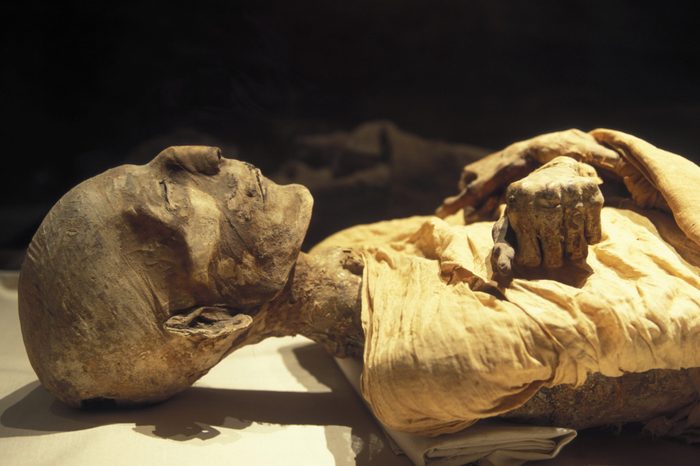
Mummies
The ancient Egyptians preserved bodies and buried them in hidden tombs in the desert along with all the goods they would need for the afterlife. The idea of a mummy’s curse, in which misfortune would befall anyone who opened a tomb, gained popularity as the Egyptology craze began in the 19th century after the Rosetta Stone’s discovery unlocked the ancient Egyptian language. One 1912 article from the Washington Post even blamed the sinking of the Titanic on a mummy’s curse.
It was the discovery of the undisturbed tomb of King Tutankhamun in 1922 that really gave the “curse of the pharaoh” life—especially after expedition financier Lord Carnarvon died from blood poisoning a year after the tomb was opened. Hollywood capitalized on this mummy hysteria a decade later with 1932’s The Mummy, starring Boris Karloff, and the tale lives on as an example of the perils of human hubris. Speaking of tales—don’t forget to read these spooky Halloween stories that will keep you up at night.
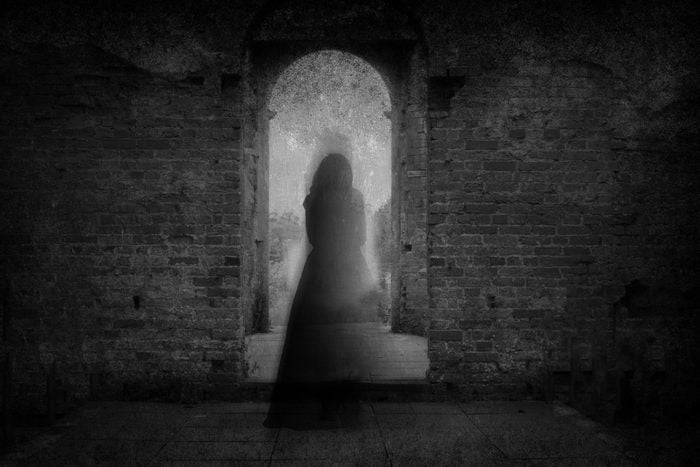
Ghosts
From transparent, misty phantoms floating through the air to unseen poltergeists throwing things around the room, our notion of ghosts is as varied as it is old. It comes from the idea that people have souls separate from their bodies, and thus live on after death, occasionally sticking around to haunt the living.
Ghost sightings have been recorded since ancient Roman times, and according to modern surveys, almost half of Americans believe in ghosts—with one in five people actually thinking they’ve seen one. Despite many photographs of alleged ghosts, spooky Ouija board stories and the popularity of modern ghost-hunting shows and tours, no one has yet to definitively prove their existence.
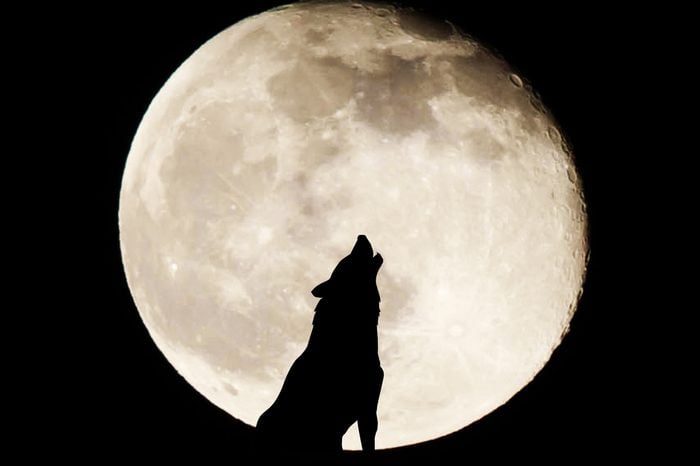
Werewolves
The poor, tortured werewolf—he doesn’t want to change into a beast because he knows the havoc he will wreak, yet he’s powerless to stop it. These shapeshifters are as old as mythology itself and figure in stories from many different cultures, from the ancient Greek tale of Lycaon, who was turned into a wolf by Zeus, to Nordic folklore.
In more recent history, Native Americans wore animal skins while hunting and possibly to scare other tribes, which may have lead to werewolf legends. Plus, these Halloween monsters may have a scientific basis; rabies, for example, could cause people to go on wolflike rampages. For a lighter look at things, consider these wolf puns that are howlingly funny.
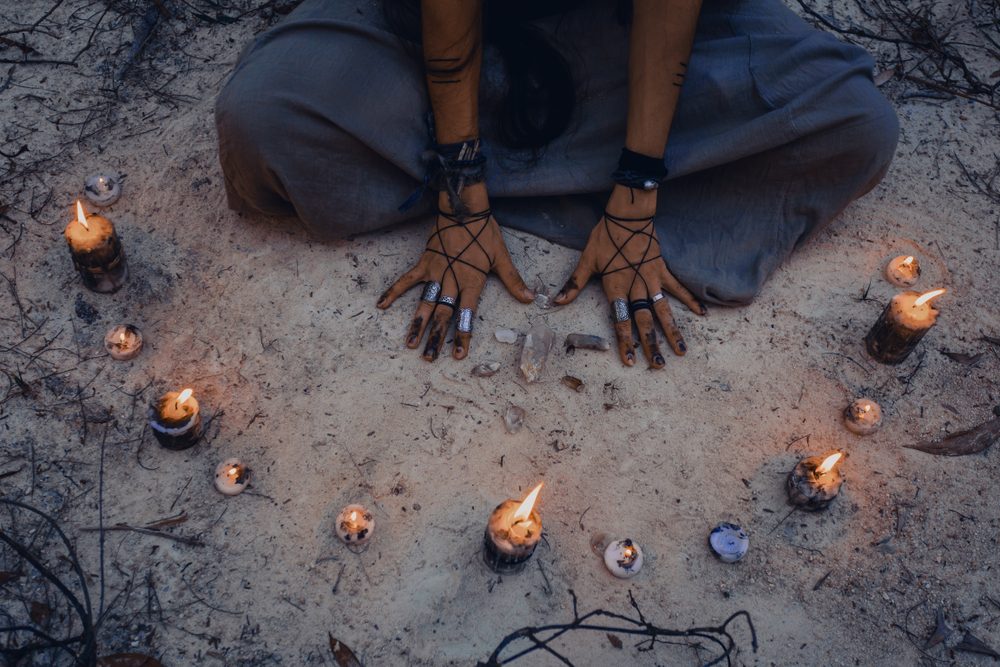
Witches
Witches enjoy a positive place in our culture today. Thanks to Harry Potter, Bewitched, Charmed, Practical Magic and other witch movies, they’re often seen as sweet and smart. But go a little further back and you’ll discover a dark history behind these beings (who just happen to inspire some of the most popular Halloween costumes).
Mentioned in the Bible, witches were thought to do the devil’s bidding to harm others. During the Middle Ages, the hysteria about witches grew, and up to 80,000 suspects were killed. Then the trouble started in America, with the famous Salem witch trials accusing 200 people of witchcraft and leading to the deaths of 20 in 1692 and 1693. Today, those who practice Wicca, a modern form of witchcraft, are seen as harmless and even peaceful worshippers of nature.
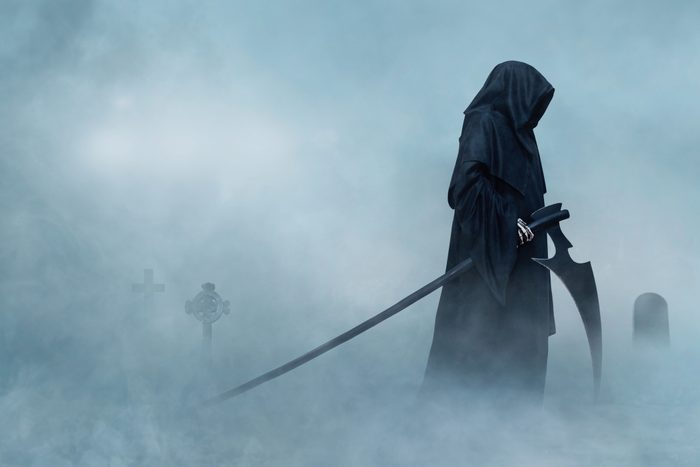
The Grim Reaper
This eerie figure is Death personified: a skeletal form shrouded in a black robe and carrying a farming tool known as a scythe to “reap,” or harvest, human souls from the earth. But how did he come to be? Although many cultures have a creature, god or other physical being representing death who brings people to the afterlife, this particular image first appeared in Europe during the 14th century amid the bubonic plague (also called the “Black Death”), which killed millions of people. Art from the time period begins depicting Death literally—as a skeleton—with the common tool of a scythe for collecting souls.
The ominous, mysterious black robe reflects religious and funereal garb. Throughout the centuries to modern times, Reaper-like characters have made appearances in everything from Charles Dickens’s A Christmas Carol to Bill and Ted’s Excellent Adventure to Harry Potter. The Grim Reaper also pops up as one of the most utterly creepy Halloween yard decorations.
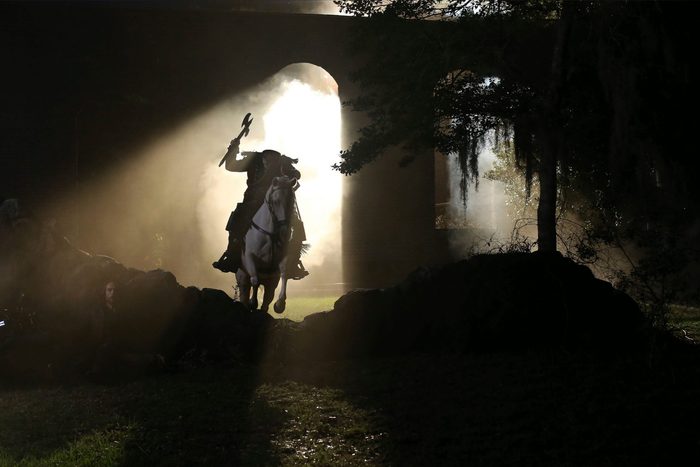
The Headless Horseman
The Headless Horseman appears to be an actual piece of folklore, when in reality it was the creation of an author’s mind. In 1820’s The Legend of Sleepy Hollow, Washington Irving came up with the tale of schoolteacher Ichabod Crane, who had a run-in with the creepy figure and was never heard from again. Lending authenticity, Irving wrote the story as if it had been discovered among the papers of a (fictional) historian.
Irving was probably influenced by German folklore of headless riders (they also appear in Irish and Scandinavian mythology), and one historical account tells of a Hessian mercenary being decapitated by a cannonball in the American Revolution. Although the village of Sleepy Hollow was originally fictional, Irving did stay in and base his tale on a real section of Tarrytown, New York—which was actually renamed Sleepy Hollow, adding legitimacy to the story. No surprise, the spooky town of Sleepy Hollow is one of the places in America that are said to be cursed.
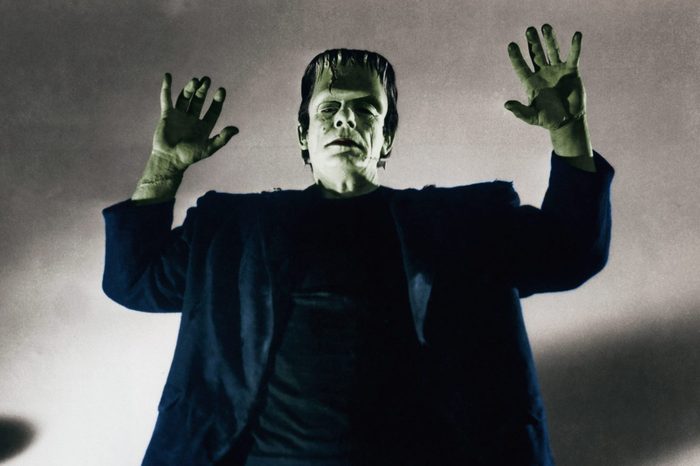
Frankenstein’s monster
Like the Headless Horseman, Frankenstein’s monster, often just called Frankenstein, was the brainchild of writer Mary Shelley. She is said to have been inspired to write her now-classic novel by a ghost-storytelling challenge while on vacation in 1816. As was the original intent of the book, mad scientist Victor Frankenstein and his jumble-of-human-body-parts creature now stand for the fine line between what science can do—and what it shouldn’t. Frankenstein’s castle in Germany, which may have inspired Shelley’s story, is one of the most haunting (or haunted?) abandoned castles around the world.
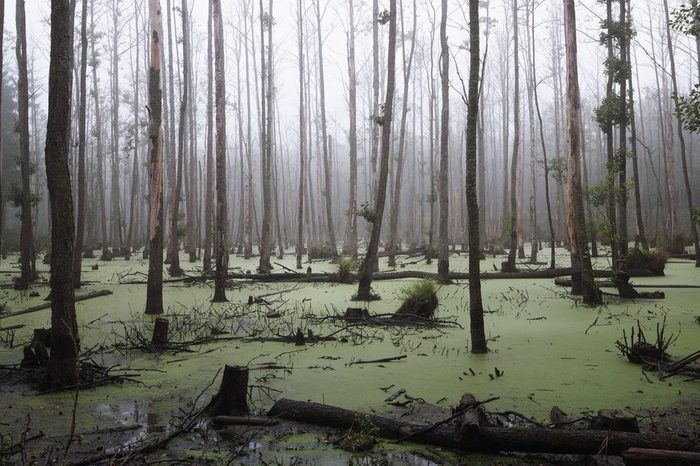
Swamp monster
Let’s face it: Swamps are creepy places. You just don’t know what’s down there, and anyone who’s ever swam in a murky pond knows the eerie feeling of something brushing against your leg. Modern versions of swamp monsters include the DC Comics Swamp Thing and Marvel’s Man-Thing, but the original seems to stem from Cajun folklore.
In the Louisiana bayou, the rougarou is a werewolf-like creature that was used to scare children into behaving. More recent tales of the Honey Island Swamp Monster also claim there’s a half-man/half-beast lurking in the swamps northeast of New Orleans—with a footprint and supposed video to prove it. Stories of aquatic-dwelling Halloween monsters may also take their cue from the 1954 horror classic Creature from the Black Lagoon, said to be inspired by a South American legend. Looking for more eerie content? These creepy photos are sure to give you the chills.
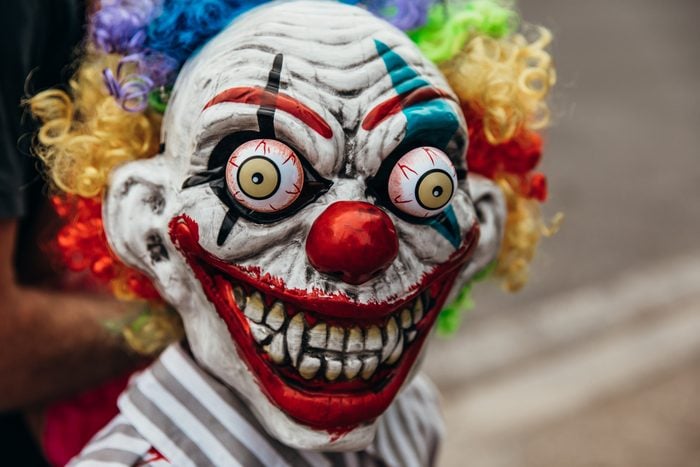
Clowns
Wait a minute, aren’t clowns meant to inspire happiness? Unfortunately, there’s a dark side to the history of clowns that has even earned them their own fear: coulrophobia. It wasn’t until the 19th century that clowns started getting a bad reputation—Edgar Allen Poe’s 1849 short story “Hop-Frog” featured a court jester out for revenge, and the 1892 opera Pagliacci features a murderous clown.
The modern notion of the evil clown came to real life in the 1970s with the serial killer John Wayne Gacy, who performed as a clown, and Stephen King’s 1986 horror classic It capitalized on American’s newfound fear. Batman villain the Joker and American Horror Story: Freak Show keep evil clowns fresh in our minds, along with a recent movie version of It that inspired a rash of scary clown sightings. Such fictional characters have contributed to why people are so afraid of clowns.
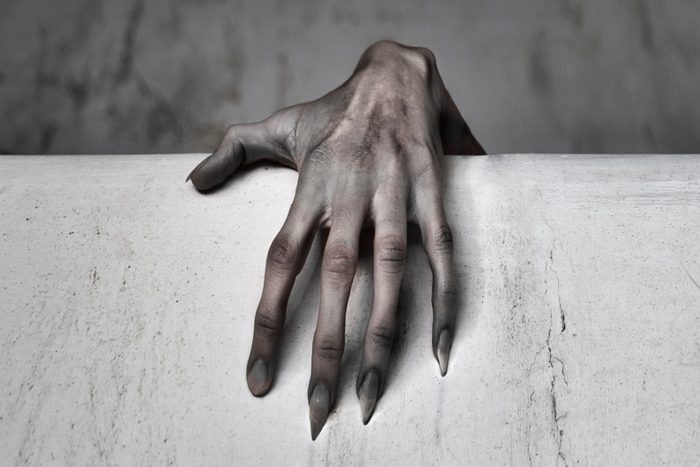
Demons
We think of demons as creatures of the devil that can possess people, like in the 1973 film The Exorcist. Modern-day religions still allow for the existence of demons, and priests may actually perform exorcisms to drive an evil spirit away. But, the notion of a dynamic between good and bad creatures—such as angels and demons—goes back to ancient times, and demons are present in many different religions.
Because these Halloween monsters can tempt people to do bad or selfish things, demons also function as a metaphor for the dual nature of human existence: our basic drive for our own needs and our higher-level concern for our fellow man.
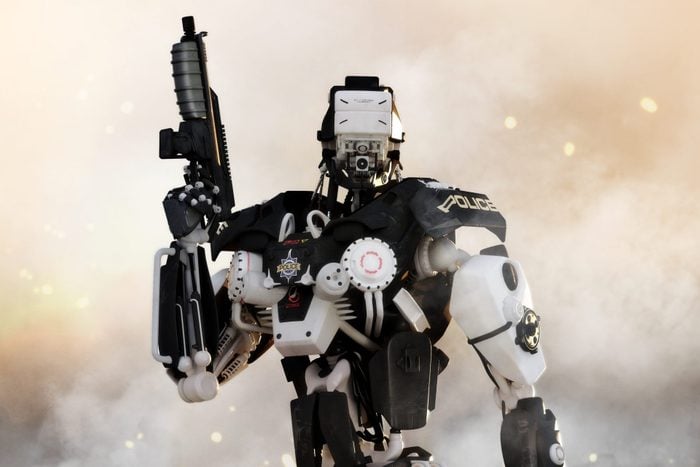
Killer robots
The fear of the unknown isn’t the only fear that creates monsters. In the 19th and 20th centuries, scientific and technological advances led to an entirely new genre, science fiction, that played on fears of what modern technology could do. Scariest of all? Artificial intelligence that could end up controlling us instead of the other way around.
First called “robots” in the 1920 play R.U.R. (Rossum’s Universal Robots), by Karel Čapek, these sentient, autonomous man-made monsters have terrified people in sci-fi classics ranging from 1927’s Metropolis and the work of Isaac Asimov to 2001: A Space Odyssey and The Terminator. More recently, there’s the popular HBO series Westworld. And lest we think such fears are unfounded, we might want to listen to those cautionary tales, given that today, autonomous military weapons could become an actual threat to humans.
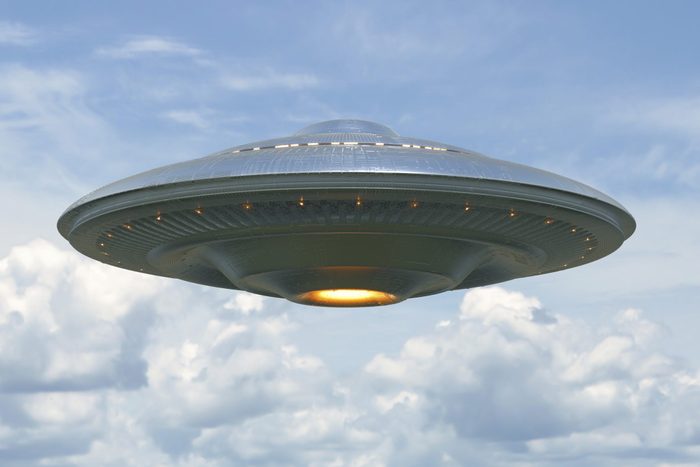
Aliens
Wondering what other beings reside among the stars is as old as human history itself. And when the cosmos began to be better understood during the Scientific Revolution of the 17th and 18th centuries, theories and stories about what else is out there began to take off. Could there really be life on other planets—and if so, is it friendly?
In the 19th and 20th centuries, the extraterrestrial came to represent our fear of the “other,” as well as fear of our own insignificance in the face of more sophisticated life forms. The first popular alien invasion story, HG Wells’s War of the Worlds, was first published in 1898, but the 1938 Orson Welles radio adaptation the night before Halloween was so realistic that some listeners thought earth was really being invaded. Later, supposed UFO sightings, tales of a 1947 alien crash landing in Roswell, New Mexico, and rumors of secret government studies on aliens at a location called Area 51 in Nevada have further fueled the idea that “the truth is out there” about alien visitations.
Countless sci-fi movies—from 1950s classics like Invasion of the Body Snatchers and The Day the Earth Stood Still to the Aliens franchise, Men in Black and the more recent Arrival and A Quiet Place—depict the havoc alien monsters might wreak on humans.
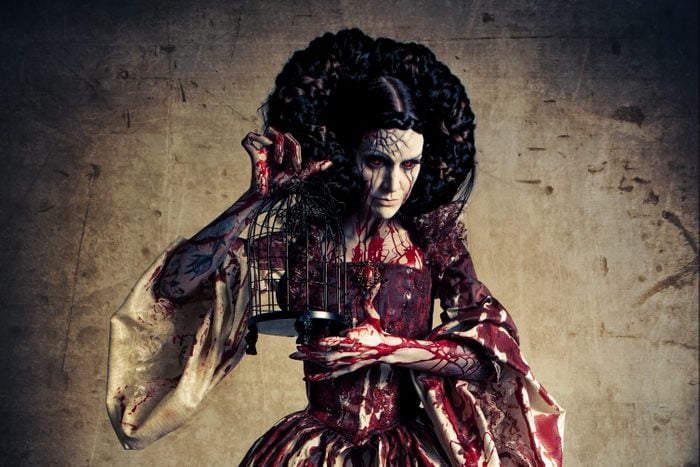
Bloody Mary
She’s at the center of an urban legend that has inspired countless terrifying dares at childhood sleepovers. We’re, of course, talking about Bloody Mary (also know as “Mary Whales” and “Mary Worth”). As the legend goes, if you light a candle, take it into a dark bathroom and chant “Bloody Mary” 13 times, the ghastly Bloody Mary herself will appear in the mirror … and she didn’t come to braid your hair.
How did Bloody Mary’s terrifying story come to be? Many credit folklorist Janet Langlois with being the first person to publish an essay mentioning the Bloody Mary ritual in 1978, but kids were participating in this spine-tingling game before its publication. Alas, there’s not much to say about how her legend and the ritual actually came to be. So, like the creepy ghost herself, Bloody Mary’s identity is shrouded in mystery. One of the more popular theories says she’s a witch who was executed for practicing black magic. No matter who she is, one thing is certain: She’s one of the Halloween monsters we wouldn’t want to encounter in the dark.
Additional reporting by Kelly Kuehn.
Source:
- Western States Folklore Society: “Bloody Mary in the Mirror: A Ritual Reflection of Pre-Pubescent Anxiety”
